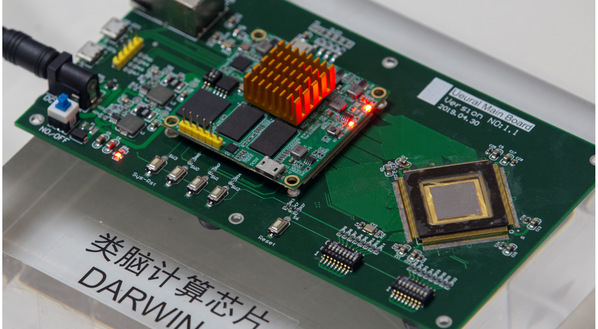‘Darwin NPU 2’ developed to process information faster
The second generation of the Darwin Neural Processing Unit (Darwin NPU 2) as well as its corresponding toolchain and micro-operating system was released in Hangzhou recently. This research was led by Zhejiang University, with Hangzhou Dianzi University and Huawei Central Research Institute participating in the development and algorisms of the chip. The Darwin NPU 2 can be primarily applied to smart Internet of Things (IoT). It can support up to 150,000 neurons and has achieved the largest-scale neurons on a nationwide basis.

The Darwin NPU 2 is fabricated by standard 55nm CMOS technology. Every “neuromorphic” chip is made up of 576 kernels, each of which can support 256 neurons. It contains over 10 million synapses which can construct a powerful brain-inspired computing system.
“A brain-inspired chip can work like the neurons inside a human brain and it is remarkably unique in image recognition, visual and audio comprehension and naturalistic language processing,” said MA De, an associate professor at the College of Computer Science and Technology on the research team.
“In comparison with traditional chips, brain-inspired chips are more adept at processing ambiguous data, say, perception tasks. Another prominent advantage is their low energy consumption. In the process of information transmission, only those neurons that receive and process spikes will be activated while other neurons will stay dormant. In this case, energy consumption can be extremely low,” said Dr. ZHU Xiaolei at the School of Microelectronics.
To cater to the demands for voice business, Huawei Central Research Institute designed an efficient spiking neural network algorithm in accordance with the defining feature of the Darwin NPU 2 architecture, thereby increasing computing speeds and improving recognition accuracy tremendously.
Scientists have developed a host of applications, including gesture recognition, image recognition, voice recognition and decoding of electroencephalogram (EEG) signals, on the Darwin NPU 2 and reduced energy consumption by at least two orders of magnitude.
In comparison with the first generation of the Darwin NPU which was developed in 2015, the Darwin NPU 2 has escalated the number of neurons by two orders of magnitude from 2048 neurons and augmented the flexibility and plasticity of the chip configuration, thus expanding the potential for applications appreciably. The improvement in the brain-inspired chip will bring in its wake the revolution of computer technology and artificial intelligence. At present, the brain-inspired chip adopts a relatively simplified neuron model, but neurons in a real brain are far more sophisticated and many biological mechanisms have yet to be explored by neuroscientists and biologists. It is expected that in the not-too-distant future, a fascinating improvement on the Darwin NPU 2 will come over the horizon.